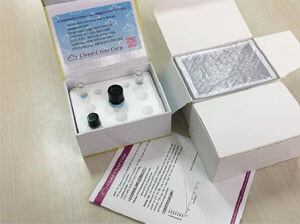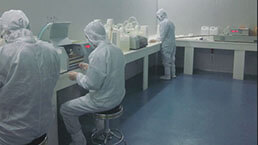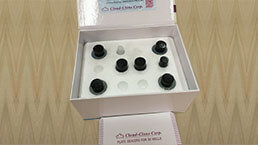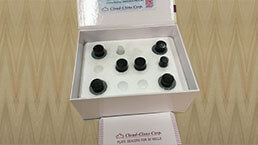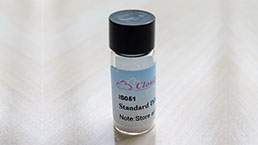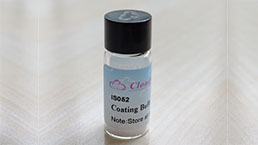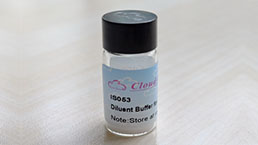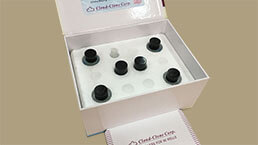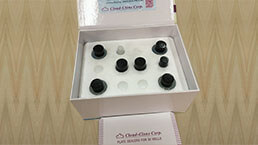ELISA Kit DIY Materials for Asymmetrical Dimethylarginine (ADMA) 

N,N-Dimethylarginine; NG,NG-Dimethylarginine dihydrochloride; Asymmetric Dimethylarginine
- UOM
- FOB US$ 1,454.00 US$ 2,424.00 US$ 4,363.00 US$ 8,484.00 US$ 14,544.00
- Quantity
Overview
Properties
- Product No.KSB301Ge11
- Organism SpeciesPan-species (General) Same name, Different species.
- ApplicationsMain materials for "Do It (ELISA Kit) Yourself".
Research use only - DownloadInstruction Manual
- CategoryMetabolic pathwayCardiovascular biology
- Reagent Contents Capture Antibody, Biotin-labeled Competitor, Standard, Streptavidin-HRP, TMB Substrate, 96-well Plate
- Detectable Sampleserum, plasma, tissue homogenates, cell lysates, cell culture supernates and other biological fluids
- Applicable PrincipleCompetitive Inhibition ELISA for Antigen Detection
- Detectable Range24.69-2,000ng/mL
- Applicable Sensitivity8.98ng/mL
Sign into your account
Share a new citation as an author
Upload your experimental result
Review

Contact us
Please fill in the blank.
Specifity
The Abs in the kit have high sensitivity and excellent specificity for detection of Asymmetrical Dimethylarginine (ADMA). No significant cross-reactivity or interference between Asymmetrical Dimethylarginine (ADMA) and analogues was observed.
Usage
1. Coat the plates with 100μL per well of working solution of Capture Antibody.incubate overnight at 4°C or incubate at 37°C for 2 hours.
2. Aspirate and wash 1 time.
3. Block the plates with 200 μL per well of working solution of Blocking Buffer. Incubate at 37°C for 1.5 hours.
4. Aspirate and wash 1 time. The plates are now ready for sample detection, the protocol is the same as regular ELISA.
Storage
Antibodies, Standard and Streptavidin-HRP should be stored at -20°C. TMB should be stored at 4°C. 96-well Plate could be stored at room temperature. The contents are valid for twelve months. They are stable for one month after opening when stored at 4°C.
Support pack
Giveaways
Increment services
Citations
- Interactions among Vascular-Tone Modulators Contribute to High Altitude Pulmonary Edema and Augmented Vasoreactivity in HighlandersPubMed: PMC3439466
- Effect of CCL5 on dimethylarginine dimethylaminohydrolase-1 production in vascular smooth muscle cells from spontaneously hypertensive rats.Pubmed: 23834755
- Effect of 18β-glycyrrhetinic acid on cerebral vasospasm caused by asymmetric dimethylarginine after experimental subarachnoid hemorrhage in rats.Pubmed:25475507
- Correlation research on ADMA plasma levels and left ventricular function of peritoneal dialysis patientsPubmed:25550968
- Asymmetric dimethylarginine contributes to airway nitric oxide deficiency in patients with COPDPubMed: 26076870
- Dimethylarginine dimethylaminohydrolase-1 mediates inhibitory effect of interleukin-10 on angiotensin II-induced hypertensive effects in vascular smooth muscle cells of spontaneously hypertensive ratsPubMed: 26375520
- Effect of 18β-glycyrrhetinic acid on cerebral vasospasm caused by asymmetric dimethylarginine after experimental subarachnoid hemorrhage in ratsPubMed: 25475507
- Dimethylarginine Dimethylaminohydrolase 2 (DDAH 2) Gene Polymorphism, Asymmetric Dimethylarginine (ADMA) Concentrations, and Risk of Coronary Artery Disease: A Case-Control Studypubmed:27677852
- Increased serum concentrations of asymmetric dimethylarginine (ADMA) in patients with early-onset coronary artery disease.pubmed:27884754
- Asymmetric dimethylarginine (ADMA) elevation and arginase up-regulation contribute toendothelial dysfunction related to insulin resistance in rats and morbidly obese humans.pubmed:26840628
- Dimethylarginine dimethylaminohydrolase-1 (DDAH1) is frequently upregulated in prostate cancer, and its overexpression conveys tumor growth and angiogenesis by metabolizing asymmetric dimethylarginine (ADMA).pubmed:29150732
- A Novel Role of Irbesartan in Gastroprotection against Indomethacin-Induced Gastric Injury in Rats: Targeting DDAH/ADMA and EGFR/ERK SignalingPubmed:29523851
- Multivessel analysis of progressive vascular aging in the rat: Asynchronous vulnerability among vascular territoriesPubmed:29605639
- Arginine bioavailability and endothelin-1 system in the regulation of vascular function of umbilical vein endothelial cells from intrauterine growth restricted newbornsDoi: 10.1016/j.numecd.2018.09.002
- Probucol improves erectile function via Activation of Nrf2 and coordinates the HO-1/DDAH/PPAR-γ/eNOS pathways in streptozotocin-induced diabetic ratsPubmed: 30454888
- Demographic, clinical and lifestyle predictors for severity of erectile dysfunction and biomarkers level in Malaysian patients
- Novel cellularly active inhibitor regresses DDAH1 induced prostate tumor growth by restraining tumor angiogenesis through targeting DDAH1/ADMA/NOS pathwayPubmed: 30673277
- Nebivolol prevents the increase of asymmetric dimethylarginine and oxidants in hyperhomocysteinemic rats
- The Role of Reactive Oxygen Species and Nitric Oxide in the Inhibition of Trichophyton rubrum Growth by HaCaT CellsPubmed: 32104540
- Blueberry anthocyanin‑enriched extract ameliorates transverse aortic constriction‑induced myocardial dysfunction via the DDAH1/ADMA/NO signaling pathway in …Pubmed: 31746378
- Effect of a Supervised Peridialytic Exercise Program on Serum Asymmetric Dimethylarginine in Maintenance Hemodialysis PatientsPubmed: 33163233
- The Usefulness of Serum Biomarkers in the Early Stages of Diabetic Retinopathy: Results of the EUROCONDOR Clinical TrialPubmed: 32344735
- Levels of endothelial substances in patients with newly identified hypertension compared with healthy controls33463628
- Non-functioning adrenal incidentalomas may increase toxic metabolites34255169
- Effect of a Low Dose of Carvedilol on Cyclophosphamide-Induced Urinary Toxicity in Rats—A Comparison with Mesna34959638
- HIF-1α and Nrf2 regulates hypoxia induced overexpression of DDAH1 through promoter activation in prostate cancerPubmed:35644470




